Physical Address
304 North Cardinal St.
Dorchester Center, MA 02124
Physical Address
304 North Cardinal St.
Dorchester Center, MA 02124
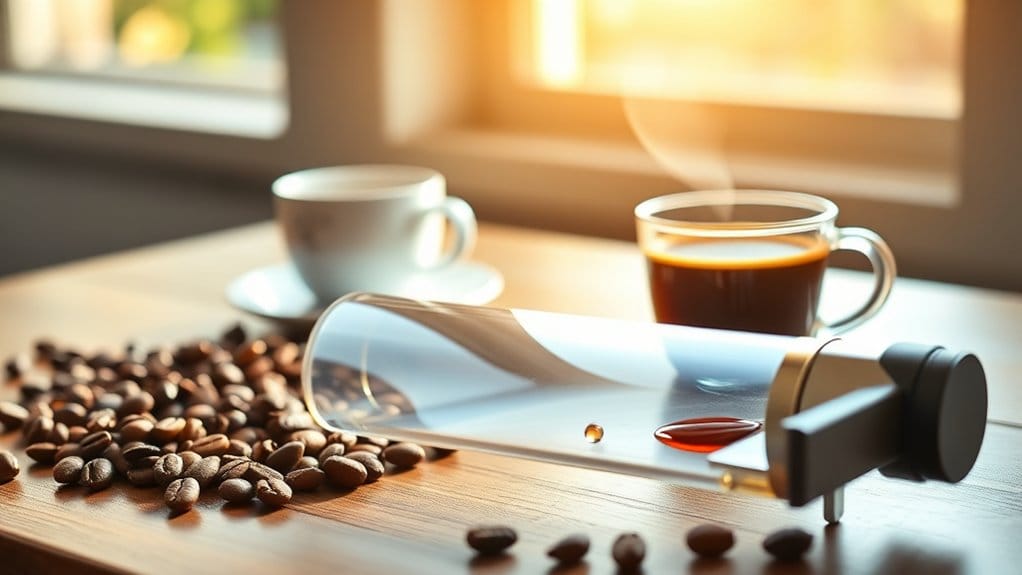
Measuring coffee extraction with a refractometer can transform your brewing experience. It’s a handy tool that helps you figure out flavor strength with just a few drops of coffee. Start by using freshly roasted beans and a consistent grind size. Take immediate readings for best results and aim for a balanced TDS between 1.15% and 1.45%. Ready to unlock the secrets of your coffee? Stick around to uncover tips and tricks that enhance your brewing game!
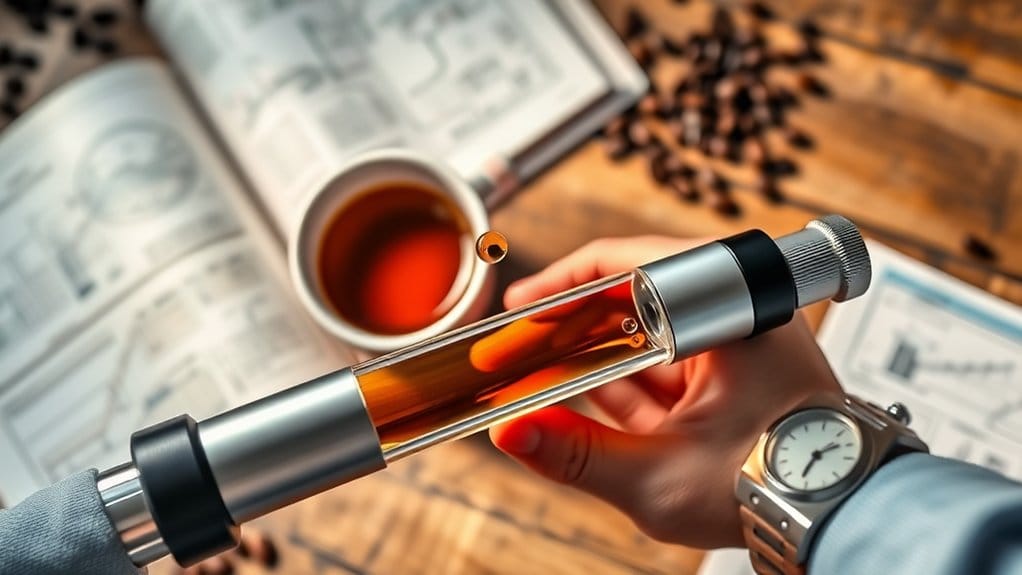
When you think about brewing the perfect cup of coffee, have you ever wondered how baristas get that rich flavor just right? Enter the coffee refractometer.
This handy tool measures dissolved solids in your brew, offering a precise way to gauge flavor strength. It uses refractive index technology to give readings quickly, usually in just one second. Additionally, many refractometers, like the handheld digital refractometer, come with high-precision sensors to ensure accurate measurements of dissolved solids. You only need a few drops of coffee—so no need for a giant sample! Plus, digital models feature user-friendly interfaces and can even connect via Bluetooth. Properly measuring extraction with a refractometer helps ensure consistent grind size in your coffee for optimal flavor.
Whether you’re a barista or just a coffee lover, these devices help guarantee every cup is as delightful as it can be.
Who knew that measuring coffee could be so high-tech and fun?
Getting your coffee sample just right is crucial for accurate refractometer readings. Start with freshly roasted beans to avoid that stale taste. Grind them uniformly; this matters! If you’re brewing espresso, a fine grind is key. For a French press? Go coarse. Use precision tools to measure grind size to keep things consistent. Proper contact with water is essential to unlock flavors during the extraction process. Regular coffee consumption can lead to high acrylamide exposure if not properly monitored. After brewing, filter your coffee to get rid of any bothersome solids. No one wants cloudy coffee! To maximize freshness, store your samples in airtight containers to keep them fresh. Remember, the quicker you get to measuring, the better your results will be. Happy brewing!
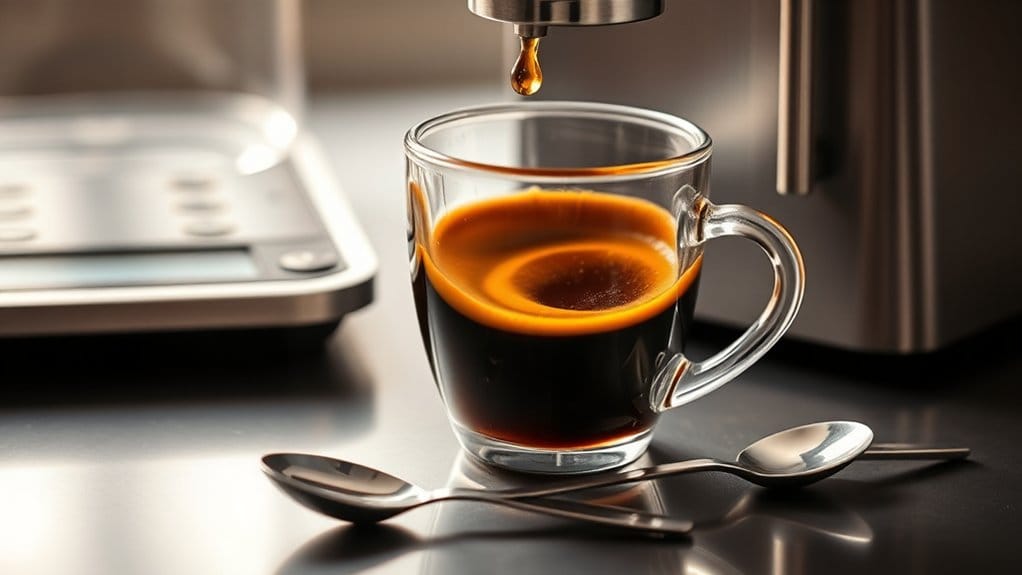
Now that you’ve prepared the perfect coffee sample, it’s time to get down to the fun part—taking accurate measurements!
First, grab a clean pipette or spoon; you don’t want any contaminants sneaking in. Stir that brew well to make sure it’s nice and homogeneous, but skip the froth—it messes with your readings!
Remember to take your sample right after brewing. A few drops on the refractometer lens should do the trick. Close it gently to spread the coffee evenly, and check for annoying air bubbles. Measuring strength of coffee in TDS is essential to understanding your brew’s potency.
Calibration with distilled water is key, as is a consistent temperature. Finally, take multiple readings, and jot down your TDS percentages so you can calculate extraction later.
Happy measuring!
Understanding TDS readings can feel a bit like unraveling a coffee mystery! You’ll uncover that Total Dissolved Solids (TDS) indicate your brew’s strength and extraction quality.
A typical TDS range for coffee is between 1.15% and 1.45%, which usually means a balanced cup. If your reading dips below 1%, you might be sipping on something weak and under-extracted.
On the flip side, a reading over 1.7% could suggest a bitter, over-extracted experience. Monitoring TDS helps you fine-tune your brew method, adjusting grind size, water ratio, or brewing time for that perfect cup.
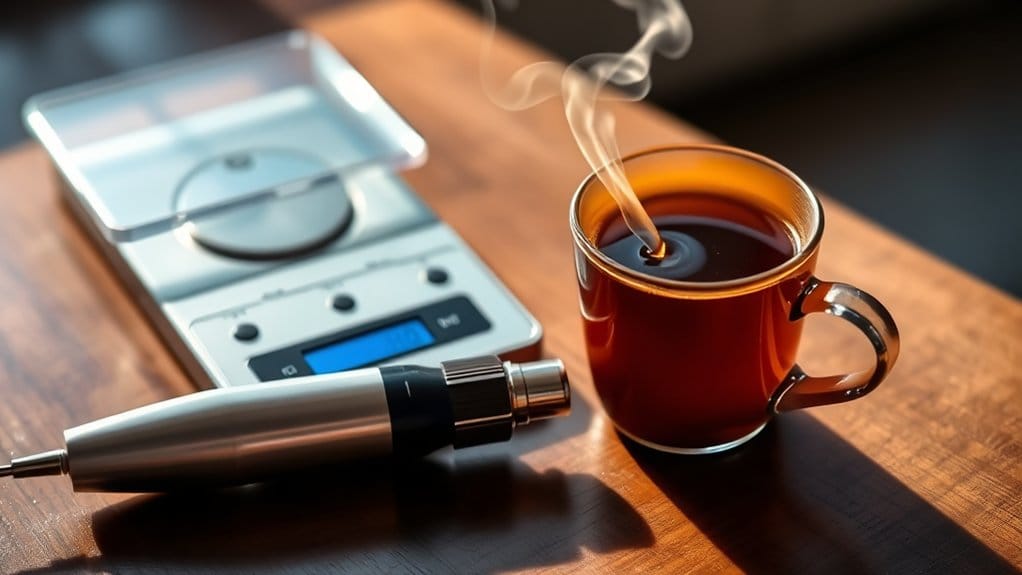
When you plunge into calculating extraction percentage, you’re stepping into the heart of coffee science.
Think of it like a coffee detective mission! First, weigh your brewed coffee. Then, correct the coffee grounds weight for dampness and CO₂.
With your trusty refractometer in hand, measure the total dissolved solids (TDS). Now for the fun part: plug your numbers into the extraction formula. Voila! You’ve got your EXT%.
Keep in mind, typical effective extraction yields range from 16% to 18% for a good brew. If you’re below 15%, you might be under-extracting; above 22%? That’s over-extraction territory!
Getting that perfect cup of coffee isn’t just about measuring extraction, it’s also about having the right gear.
First, think about an espresso machine. It brews under high pressure, giving you that rich shot of espresso. Plus, with steam wands, you can froth milk for delicious lattes.
Then there’s the coffee grinder. A good burr grinder is crucial for consistency, ensuring every cup tastes great.
Don’t forget about batch brew makers for when you’re serving lots of coffee. Manual brewers like the French press or Chemex let you showcase your skills.
Finally, gather a few accessories like tampers and knock boxes to keep the process smooth. Investing in these key items transforms your coffee experience into a delightful adventure, especially when you understand the importance of quality ingredients in espresso preparation!
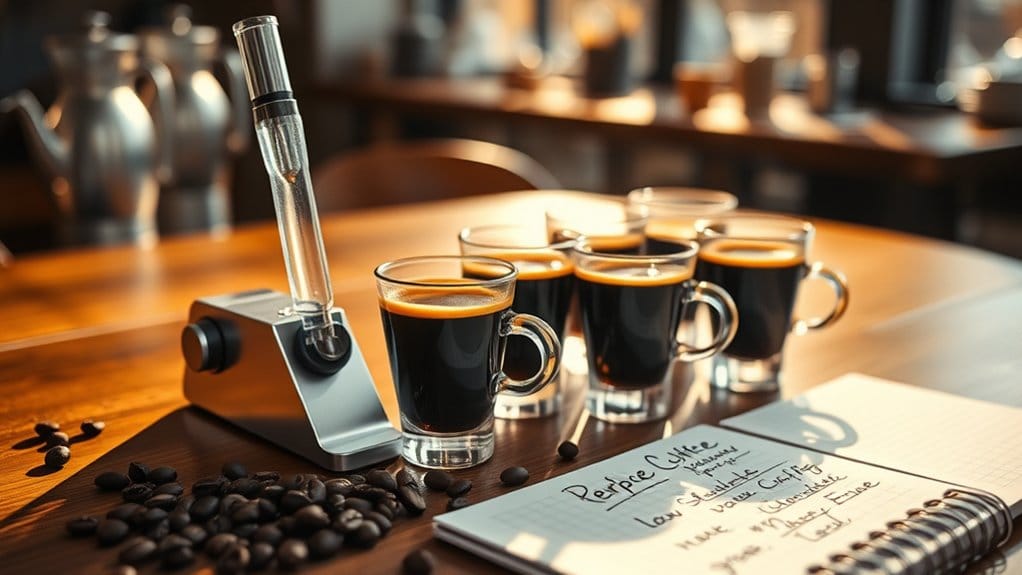
How can you lift your coffee game to new heights? Start with your grind size.
Using a burr grinder guarantees consistency. A coarse grind takes longer, whereas a fine grind could lead to bitterness. Experiment to find what works best for your brew method!
Next, focus on water quality. Filtered water makes a world of difference, and keep the temperature between 91-99°C for the best extraction.
Don’t forget about brew time! A bloom phase of around 30 seconds can release tasty flavors.
Finally, watch out for channeling—uneven water flow can lead to weak spots in your cup. Understanding pump types can also improve your overall extraction quality.
Enjoy the adventure of exploration as each adjustment brings you closer to coffee perfection! Enjoy every sip!
If you’re keen to nail your coffee measurements, investigating different refractometer models can feel like a treasure hunt.
You’ve got gems like the VST LAB Coffee III, the gold standard known for its accuracy and durability—though it’s a bit pricey. The Atago PAL-Coffee is another favorite, celebrated for measuring Total Dissolved Solids and sugar content, making it a trusty sidekick in your brewing adventures.
Don’t overlook the DiFluid refractometer; it’s often mentioned alongside the top contenders. Digital refractometers provide extensive details, whereas optical ones are smaller and less expensive, perfect for quick checks—though they only measure sugar.
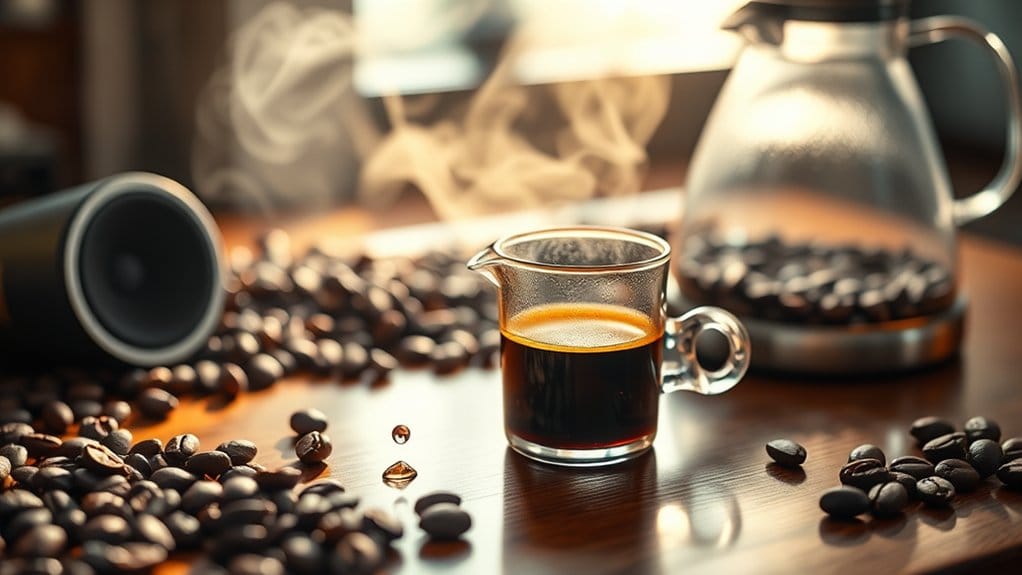
Investigating different refractometer models can sharpen your coffee game, but remember, brewing isn’t just science; it’s an art too.
Finding the perfect balance of flavors is essential. Fast-extracting compounds bring delightful acidity and sweetness, whereas slow-extracting ones can turn your coffee bitter. You want a cup where bright fruity notes linger, not a chalky mouthful.
Consider grind size and water temperature; they can make or break your brew. In the right hands, a refractometer will guide your extraction yield, revealing a world of taste. Water quality is also crucial, as it significantly impacts the final flavor profile of your coffee.
You should calibrate your refractometer regularly, ideally every 1 to 12 weeks, depending on usage. For frequent use, consider weekly checks. Always zero calibrate before measurements to guarantee your readings stay accurate.
Yes, you can definitely use a refractometer for other beverages. It helps measure sugar content in juices, beers, and wines, ensuring quality and consistency across various drinks as you optimize production processes for flavor and strength.
Common refractometer brands include DiFluid, Smart Digital, VST LAB, and Atago. Each offers various models catering to different needs, from precision measurements to budget-friendly options, ensuring you’ll find one that suits your coffee analysis.
Water quality directly influences TDS readings, impacting extraction effectiveness. Low-quality water may lead to inaccurate measurements, causing bitter or sour coffee. It’s essential to use filtered water to achieve ideal flavor and reliable TDS results.
Yes, you should clean the measurement surface after each use, calibrate with distilled water, avoid harsh chemicals, and store it in a protective case. Regular maintenance guarantees accurate readings and prolongs the refractometer’s lifespan.